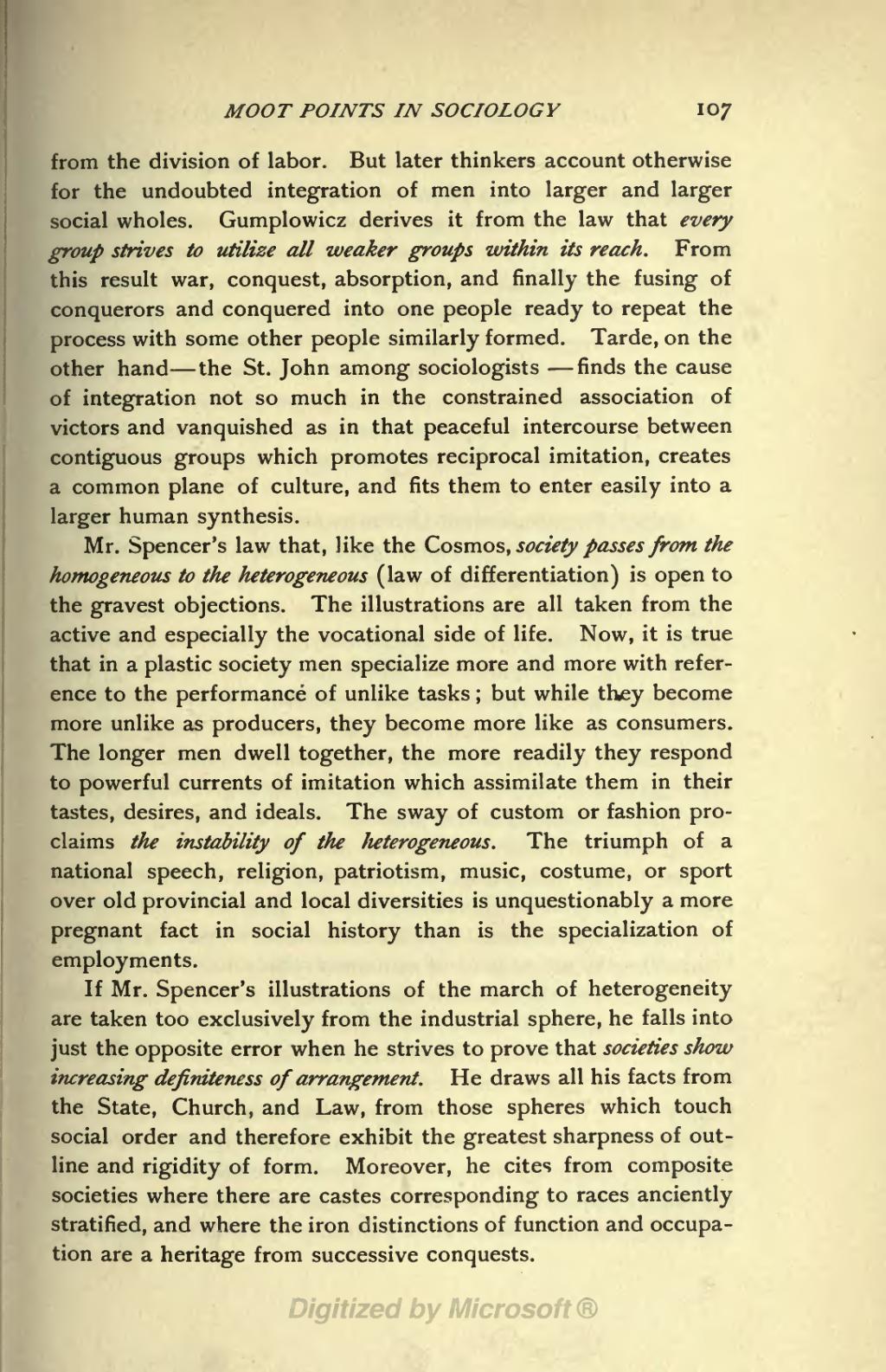MOOT POINTS IN SOCIOLOGY 1 07
from the division of labor. But later thinkers account otherwise for the undoubted integration of men into larger and larger social wholes. Gumplowicz derives it from the law that every group strives to utilize all weaker groups within its reach. From this result war, conquest, absorption, and finally the fusing of conquerors and conquered into one people ready to repeat the process with some other people similarly formed. Tarde, on the other hand the St. John among sociologists finds the cause of integration not so much in the constrained association of victors and vanquished as in that peaceful intercourse between contiguous groups which promotes reciprocal imitation, creates a common plane of culture, and fits them to enter easily into a larger human synthesis.
Mr. Spencer's law that, like the Cosmos, society passes from the homogeneous to the heterogeneous (law of differentiation) is open to the gravest objections. The illustrations are all taken from the active and especially the vocational side of life. Now, it is true that in a plastic society men specialize more and more with refer- ence to the performance of unlike tasks ; but while they become more unlike as producers, they become more like as consumers. The longer men dwell together, the more readily they respond to powerful currents of imitation which assimilate them in their tastes, desires, and ideals. The sway of custom or fashion pro- claims the instability of the heterogeneous. The triumph of a national speech, religion, patriotism, music, costume, or sport over old provincial and local diversities is unquestionably a more pregnant fact in social history than is the specialization of employments.
If Mr. Spencer's illustrations of the march of heterogeneity are taken too exclusively from the industrial sphere, he falls into just the opposite error when he strives to prove that societies show increasing definiteness of arrangement. He draws all his facts from the State, Church, and Law, from those spheres which touch social order and therefore exhibit the greatest sharpness of out- line and rigidity of form. Moreover, he cites from composite societies where there are castes corresponding to races anciently stratified, and where the iron distinctions of function and occupa- tion are a heritage from successive conquests.
